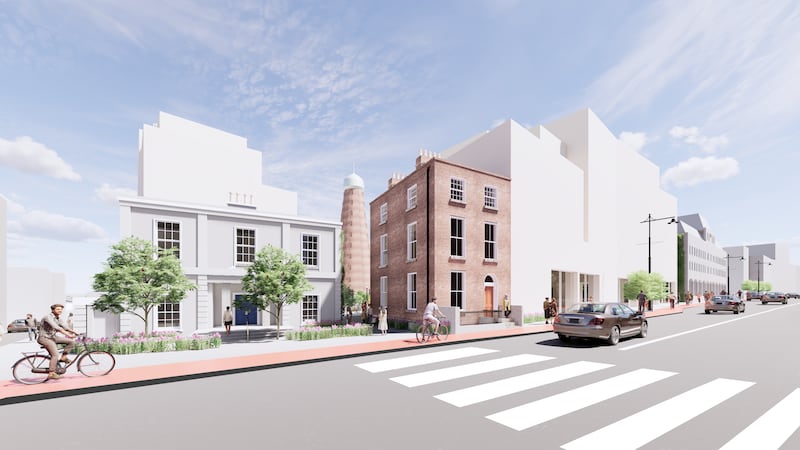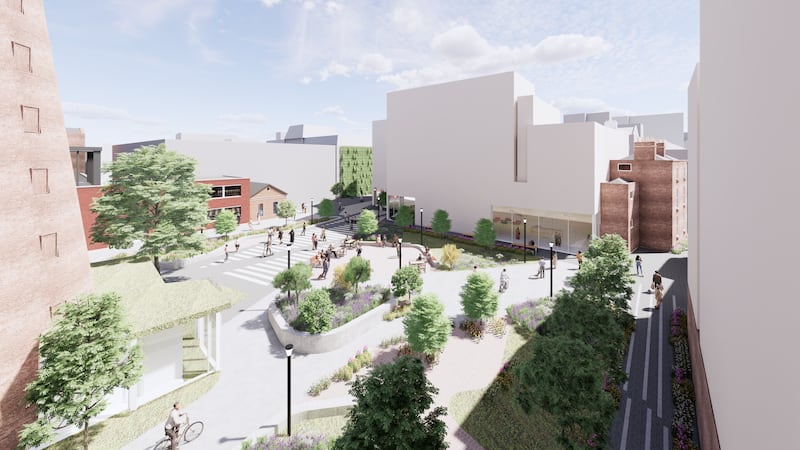More than 500 homes will be built on the site of the Digital Hub campus in Dublin 8, according to a draft master plan to be published by the Land Development Agency (LDA) on Monday.
The redevelopment of the 3.72-hectare site off Thomas Street in the Liberties will involve the construction of new affordable and social apartments in blocks up to 12 storeys high, as well as the renovation and reuse of several protected and historic buildings.
The Digital Hub lands have been identified for transfer to the LDA from the Digital Hub Development Agency (DHDA) as part of the Government’s Housing for All strategy. The Government in April 2021 announced the closure of the Digital Hub. However, late last year the DHDA agreed a deal with the Department of Communications, Climate Change and Environment to allow the agency to offer leases to new and existing companies until 2025, after which construction of apartments is set to begin.

The development, which the LDA is calling Pear Tree Crossing in reference to a tree on the site said to be the oldest fruit-bearing tree in Ireland, includes some 550 homes. Most of the housing will be in new apartment blocks, with a smaller number of homes in the upper floors of existing historic buildings, including some fronting on to Thomas Street.
READ MORE
The site has been divided into four plots: the Watling plot, the St Patrick’s Tower plot, the Vathouse 7 plot and the School Street plot, all linked by cycling and walking routes.
The Watling plot, which includes a historic, but derelict, warehouse will incorporate buildings of between two and 12 storeys and 110 new homes. The Vat House 7 plot also includes a former industrial building, the old vat house used in the local brewing industry, which is likely to be redeveloped for cultural and/or commercial use. The plan includes a significant number of protected structures along Thomas Street and Crane Street, which will have a mix of residential and commercial uses. Apartments up to 12 storeys tall could also be accommodated on this plot, which has been designated for 190 homes.

The St Patrick’s Tower plot is centred on the site’s most important historic structure, St Patrick’s Tower, which is one of the oldest surviving smock mills (a sloping-sided windmill) in Europe. This plot will have the smallest number of homes, about 60, and will also be restricted in height to about eight storeys, surrounding a public square.
The School Street plot will have 190 apartments, in blocks from four to 12 storeys. It includes the former Guinness Hopstore and the Thomas Court former brewery building, along with a derelict school and car park. This plot is “least impacted by historic fabric” the master plan states, given much of the site is currently used as a surface car park.
The master plan, which will be subject to public consultation, will be available from today at peartreecrossing.ie. The LDA intends to submit an initial planning application later in 2023, with phased delivery expected to take place from 2024, it said.













